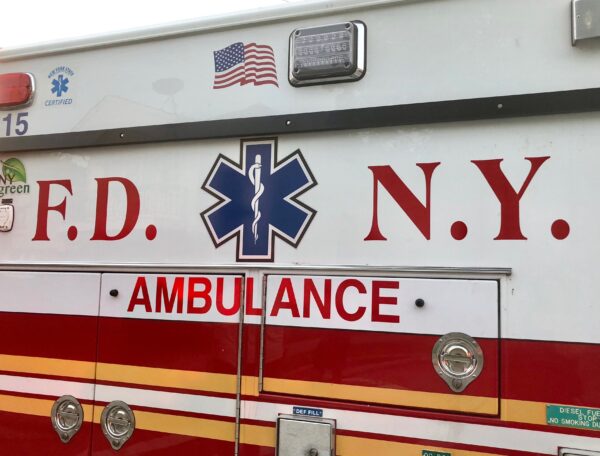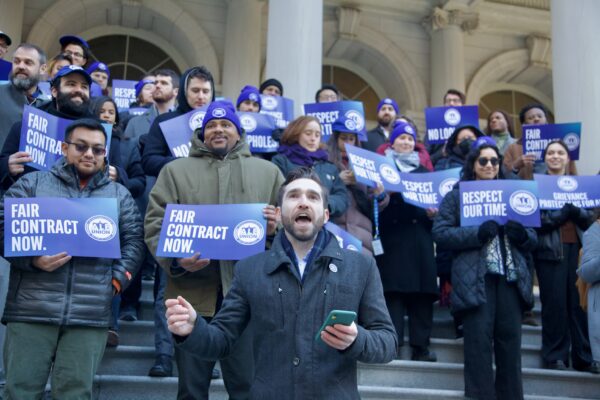May 27, 2014
By Steven Wishnia
Saying that on average three city bus drivers are assaulted every week, Transport Workers Union Local 100 is urging the state legislature to require the Transit Authority to install silent alarms and protective partitions on its buses.
The bill, sponsored by Assemblymember Walter Mosley (D-Brooklyn) and state Senate co-leader Jeffrey Klein (IDC-Bronx), would mandate that all city buses be retrofitted with “an L-shaped enclosure around the driver, made of Plexiglas at least one inch thick or its equivalent” over the next five years. It would also require the installation of emergency alarms synchronized with the bus’ global positioning system, which would give the New York City Transit command center the bus’s exact location when a driver rings the alarm.
The TWU’s new contract calls for similar measures, says Mosley, but he wants them to be “ensured by law.”
The silent-alarm technology is already available on all city buses, as part of the GPS system, and could be activated just by upgrading the command center, says Frank Austin, director of safety for Local 100’s bus department. There’s even a button to set it off on about 70% of the buses, he adds.
According to Austin and Mosley, in 2012-13, there were over 350 incidents of assault on a New York City bus operator, causing them to lose over 20,000 workdays due to injuries and illness. Only 23 percent of buses have partitions to protect drivers. Most attacks happen in the Bronx and Brooklyn, says Austin. Drivers at four of the city’s 26 bus depots report the most assaults: at Kingsbridge and West Farms (serving the Bronx) and East New York and Flatbush in Brooklyn.
Most assaults come when a driver challenges someone who won’t pay their fare, he says. Drivers have been spat on, punched, and stabbed with needles and knives. “We’re telling our drivers not to challenge,” he adds. Unlike subway agents, who are inside booths, “a bus driver is totally defenseless without a partition.”
The TWU has been lobbying for such legislation for “close to ten years,” says Austin. In the Assembly, it’s currently awaiting action by the Cities Committee; in the Senate, it advanced to a third reading May 19, meaning it’s on the calendar for floor debate and a final vote. It also needs a home-rule message from the New York City Council. Mosley says he has “no doubt this will happen” this year.



